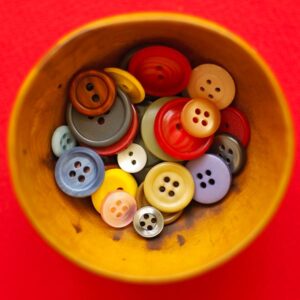Free shipping on USA orders over $129!


A few months ago I hit a wall with my youngest and her progress in math. She was doing the work but not really understanding the concepts. So I e-mailed my friend, Richele Baburina, who has done extensive research in Charlotte Mason’s methods for teaching math and has written the book, Mathematics: An Instrument for Living Teaching.
Richele and I talked through the situation and she reminded me of the natural progression of steps involved in the way Charlotte taught numbers and sums. That reminder gave me the confidence to set aside the packaged curriculum (that wasn’t working for this daughter anyway) and simply list the concepts I needed to teach in their natural order. Now I’m comfortably working my way down that list, using Charlotte’s wonderful methods and introducing each new concept as my daughter is ready for it.
We’re working from the very beginning, doing numbers and sums from 1 to 9. (Currently she’s up to 5!) Some of you may be in the same spot with your math instruction, so here’s a look at the methods and sequential steps that Charlotte used to teach children their beginning numbers and sums.
Step One: Introduce the number by having the child find that many of something in your home. If you are introducing the number 3, for example, he might spot three drawers in the dresser or three toy giraffes on the shelf or three chairs in the room. Once he demonstrates that he understands the concept of three items, you can show him that three items are represented by the numeral “3.”
Step Two: See if your child can count out that many items. Use everyday objects you have around the house for manipulatives. We’re using beans, buttons, craft sticks, colored blocks—a variety of items. Encourage your child to count the items forward and backward to reinforce where that number lies in the larger scheme of things.
Step Three: Use your manipulatives to work simple sums with that number. Include both addition and subtraction: “You have 3 beans and I have 2 beans. How many beans have we all together?” or “If you had 5 buttons and 4 rolled away, how many buttons would you have left?” Let your child move the items to demonstrate the scenarios you give and make his own discoveries. (You can even dabble a bit in multiplication and division. For example, if you were working with the number 6 you could ask, “If we made 2 equal piles with our sticks, how many sticks would go in each pile?”)
Step Four: Expand on Step Three by using imaginary items to work simple sums with that number. Rather than sticking to the manipulatives at hand, call them something else. Maybe you have beans on the table, but they could be used to work out a sum for “Farmer Brown has 3 sheep in this pasture and 2 sheep in the other. How many sheep does Farmer Brown have all together?” or “Mary had 5 marbles in her hand; 4 fell out and rolled under the sofa. How many marbles does she have left?” Use your imagination and have fun! My daughter loves it when I include her favorite dogs in the scenarios.
Step Five: When you notice that the child is beginning to work the sums without needing the manipulatives, he is ready for pure numbers: 3+2=? and 5-4=? And when he is done with this step, you can start over with the next number (1 through 9).
Just as Charlotte used oral narration in the lower grades, she used oral work in these beginning math lessons. Writing an equation should be a rare treat and done only if the child is having an exceptionally good day.
The key is to guide without pushing him and without carrying him. Spend as many lessons on each step as needed. If you have a set schedule in your mind that your child will progress to a certain number by a certain time, you are doing him a disservice. The child is a person and part of respecting him as a person is allowing him to make his own relations with the beauty and truth of math—it is in his own power he must go—and at his own pace, securing each step on solid understanding.

This was very, very helpful. Do you have a list of the steps in their natural order? I remember reading math needed to be taught in a certain order so the ideas can build on another. I don’t know the order so I feel I must rely on a text book to provide it.
Richele Baburina’s book Mathematics: An Instrument for Living Teaching gives a complete guide to how Charlotte Mason taught math, with details on the steps to teach each math topic.
Very useful!